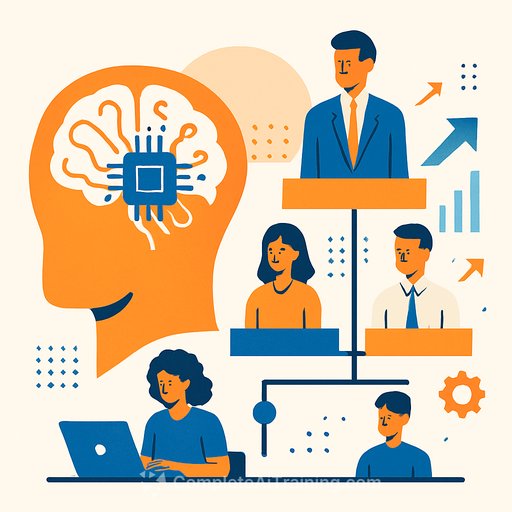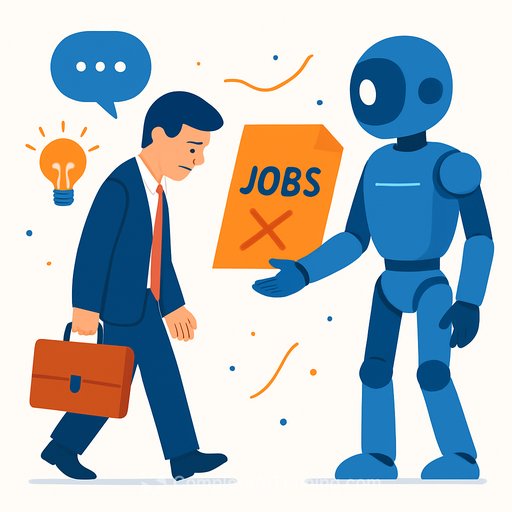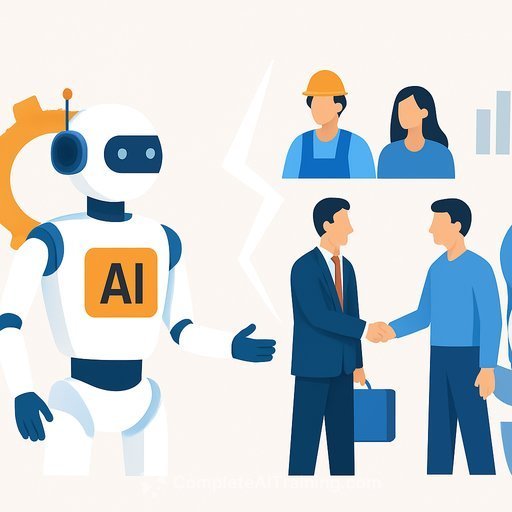How AI is Flattening Corporate Structures and Changing HR Dynamics
Artificial intelligence is quietly reshaping corporate hierarchies, bringing the C-suite closer to frontline employees by flattening traditional organizational charts. This shift affects not only entry-level roles but also middle management and executive positions. For HR professionals, understanding these changes is critical as AI alters job roles, team structures, and leadership dynamics.
The AI-Driven Flattening of Organizations
Companies adopting an AI-first mindset are reducing management layers and merging departments to streamline operations. Instead of large teams performing routine tasks, AI agents now handle many functions autonomously, supervised by smaller human groups. For example, Moderna combined its HR and tech departments under a Chief People and Digital Officer, reflecting how AI is blurring traditional boundaries.
At McKinsey, AI supports consultants by automating tasks like creating presentations and summarizing research. This reduces the need for extensive human support and changes how teams operate. As AI takes over repetitive work, job roles become more fluid, and employees may take on new responsibilities beyond their original scope.
These changes create a networked organizational model where humans oversee AI agents rather than large human-only teams. A healthcare company replaced a 10-person software team with a three-person unit managing AI tools, illustrating this new approach.
Middle Management Faces Transformation, Not Extinction
Middle managers are often caught in the crosshairs of AI-driven restructuring. Tech leaders argue that reducing middle management accelerates decision-making and innovation. Amazon, for instance, is cutting managerial layers to boost efficiency in an AI-enabled environment.
Yet, middle management is unlikely to disappear. Instead, their roles will evolve. AI reduces coordination burdens, allowing managers to focus more on strategic tasks, soft skills, and employee well-being. Managing a hybrid workforce of humans and AI agents requires a blend of leadership, communication, and technical understanding.
Soft skills such as empathy and interpersonal communication become even more essential. Algorithms can’t replace the human touch needed to maintain morale and retain top talent. HR professionals should anticipate an increased emphasis on these skills during leadership development.
Interestingly, some experts predict middle management could grow more complex. As AI handles routine tasks, managers will orchestrate broader workflows, requiring proficiency in AI tools alongside traditional skills like ethics, logic, and cross-team collaboration.
New Roles and Power Shifts at the Executive Level
AI’s impact reaches the highest ranks. New C-suite roles like Chief AI Officer (CAIO) are emerging, with many companies creating or recruiting for these positions. These roles focus on integrating AI strategically across business functions and managing competitive risks.
However, these positions don't replace core leadership functions. The entire executive team must engage in AI strategy and oversight. Hiring a CAIO doesn’t mean AI responsibility is delegated away; it remains a top-level priority.
While AI might automate some executive tasks, those at the top tend to retain their influence. Shifts in power are more noticeable among lower and mid-level roles, emphasizing the importance of adaptability throughout the organizational hierarchy.
What HR Should Focus on Moving Forward
- Redefining Job Roles: Expect job descriptions to become more dynamic as AI takes on specific tasks. HR will play a key role in retraining and reskilling employees.
- Leadership Development: Equip managers with AI literacy alongside soft skills to supervise hybrid human-AI teams effectively.
- Organizational Design: Rethink team structures to accommodate AI agents and smaller, cross-functional groups.
- Employee Experience: Maintain human-centered management to support engagement and retention in an AI-augmented workplace.
For HR professionals seeking practical training on AI’s integration in the workplace, resources like Complete AI Training offer courses tailored to different job functions and skill levels.
Conclusion
AI is reshaping corporate hierarchies by flattening structures, automating routine tasks, and changing leadership roles. This transformation requires HR teams to rethink talent management, organizational design, and leadership development. Embracing AI’s potential while preserving human connection will be key to building resilient, agile companies.
Your membership also unlocks:






